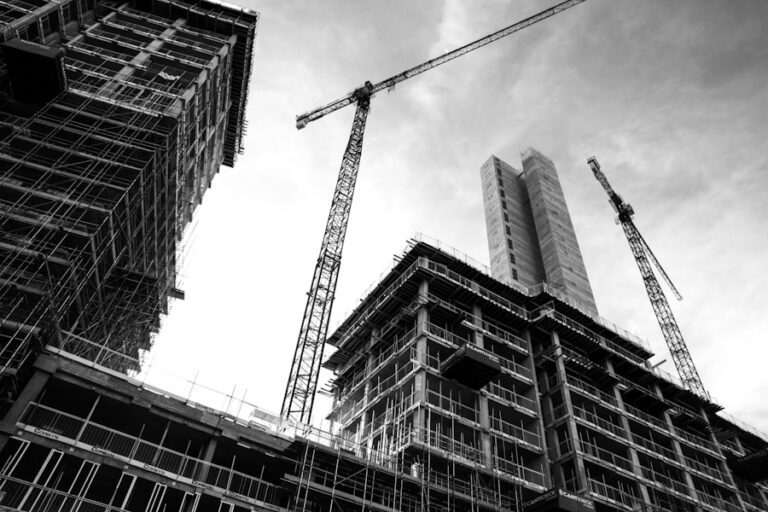The Balinese aesthetic is deeply rooted in the island’s rich cultural and artistic traditions. Balinese architecture is characterized by its intricate carvings, ornate detailing, and use of natural materials such as wood, stone, and thatch. Traditional Balinese homes, known as “compound houses,” are designed around a central courtyard and feature open-air living spaces that seamlessly blend with the surrounding natural environment. The concept of “Tri Hita Karana,” which emphasizes harmony and balance between humans, nature, and the spirit world, is a guiding principle in Balinese design.
When designing a villa in Bali, it’s important to understand and respect the local aesthetic traditions. This means incorporating elements such as traditional Balinese rooflines, carved wooden doors, and open-air pavilions into the design. Balinese architecture also places a strong emphasis on symmetry and proportion, so it’s important to carefully consider the layout and placement of each element within the villa. Additionally, the use of natural materials and sustainable building practices is essential to maintaining the integrity of the Balinese aesthetic.
Choosing the Right Location for Your Villa
The location of your villa is one of the most important decisions you’ll make when building in Bali. The island offers a diverse range of landscapes, from lush rice terraces to pristine beaches to dense jungle, each with its own unique appeal. When choosing a location for your villa, it’s important to consider factors such as accessibility, views, and proximity to amenities. Whether you prefer a secluded hillside retreat or a beachfront oasis, there are plenty of options to suit your preferences.
It’s also important to consider the cultural and environmental impact of your chosen location. Building in sensitive areas such as rice terraces or coastal zones requires careful consideration and consultation with local authorities. Additionally, it’s important to be mindful of the local community and ensure that your villa complements rather than disrupts the surrounding environment. Working with a local real estate agent who understands the intricacies of the Balinese property market can help you find the perfect location for your villa.
Working with Local Architects and Builders
When building a villa in Bali, it’s essential to work with local architects and builders who understand the unique challenges and opportunities of construction on the island. Local professionals have a deep understanding of Balinese design principles, building techniques, and materials, and can help you navigate the complexities of the construction process. They can also provide valuable insights into local regulations, permitting processes, and sourcing materials.
Collaborating with local architects and builders also allows you to tap into their network of skilled craftsmen and artisans who can bring your vision to life. Balinese builders are known for their craftsmanship and attention to detail, and working with them can ensure that your villa is built to the highest standards. Additionally, local professionals can help you incorporate sustainable building practices and environmentally friendly design elements into your villa, ensuring that it has a minimal impact on the surrounding environment.
Incorporating Traditional Balinese Design Elements
Incorporating traditional Balinese design elements into your villa is essential for creating an authentic and harmonious living space. From intricately carved wooden doors to ornate stone carvings, there are countless ways to infuse your villa with the beauty and elegance of Balinese architecture. Traditional Balinese homes are designed around a central courtyard, with open-air pavilions that seamlessly blend indoor and outdoor living spaces. This concept of “openness” is a key element of Balinese design and can be achieved through the use of sliding glass doors, outdoor lounges, and expansive verandas.
Another important aspect of traditional Balinese design is the use of natural materials such as wood, stone, and thatch. These materials not only lend a sense of warmth and authenticity to the villa but also help to create a strong connection to the surrounding environment. Incorporating traditional Balinese rooflines, known as “alang-alang,” can also add a sense of drama and grandeur to the villa’s architecture. By carefully selecting and integrating these design elements, you can create a villa that pays homage to the timeless beauty of Balinese architecture.
Balancing Luxury and Sustainability in Villa Construction
Balancing luxury and sustainability is a key consideration when building a villa in Bali. While it’s important to create a luxurious and comfortable living space, it’s equally important to minimize the environmental impact of construction and operation. Sustainable building practices such as passive cooling, rainwater harvesting, and solar power can help reduce energy consumption and minimize the villa’s carbon footprint. Additionally, using locally sourced materials and employing skilled local craftsmen can help support the local economy and reduce the environmental impact of construction.
Incorporating sustainable design elements into your villa can also enhance its appeal to environmentally conscious travelers. Features such as organic gardens, natural swimming pools, and eco-friendly amenities can attract guests who are seeking a more sustainable and mindful travel experience. By prioritizing sustainability in villa construction, you can create a luxurious retreat that not only respects the natural environment but also appeals to a growing market of eco-conscious travelers.
Navigating Local Building Regulations and Permits
Navigating local building regulations and permits is an essential part of building a villa in Bali. The island has strict regulations governing construction in sensitive areas such as rice terraces, coastal zones, and protected forests. It’s important to work closely with local authorities to ensure that your villa complies with all relevant regulations and permits. This may involve conducting environmental impact assessments, obtaining land use permits, or consulting with local communities.
Working with a reputable local lawyer or consultant who understands the intricacies of Bali’s legal system can help streamline the permitting process and ensure that your villa is built in compliance with all relevant regulations. It’s also important to be mindful of cultural sensitivities and community concerns when building in Bali. Engaging with local communities and seeking their input can help foster positive relationships and ensure that your villa is welcomed by the surrounding community.
Furnishing and Decorating Your Bali Villa
Furnishing and decorating your Bali villa is an opportunity to infuse your living space with your personal style while honoring the island’s rich artistic traditions. Balinese decor is characterized by its use of natural materials such as teak wood, rattan, and bamboo, as well as intricate carvings and traditional textiles. Incorporating these elements into your villa’s interior design can create a sense of warmth and authenticity while paying homage to the island’s cultural heritage.
When furnishing your villa, it’s important to seek out skilled local artisans who can create custom furniture and decor pieces that reflect the beauty and craftsmanship of Balinese design. From hand-carved wooden bed frames to intricately woven textiles, there are countless ways to incorporate traditional Balinese craftsmanship into your villa’s interior. Additionally, sourcing decor items from local markets and galleries can help support local artists and craftsmen while adding unique touches to your living space.
In conclusion, building a villa in Bali offers a unique opportunity to create a luxurious retreat that honors the island’s rich cultural heritage and natural beauty. By understanding the Balinese aesthetic, choosing the right location, working with local professionals, incorporating traditional design elements, balancing luxury and sustainability, navigating local regulations, and furnishing your villa with care and intention, you can create a living space that seamlessly blends with its surroundings while offering unparalleled comfort and beauty. With careful planning and attention to detail, you can build a Bali villa that not only reflects your personal style but also respects the timeless traditions of Balinese architecture and design.


















